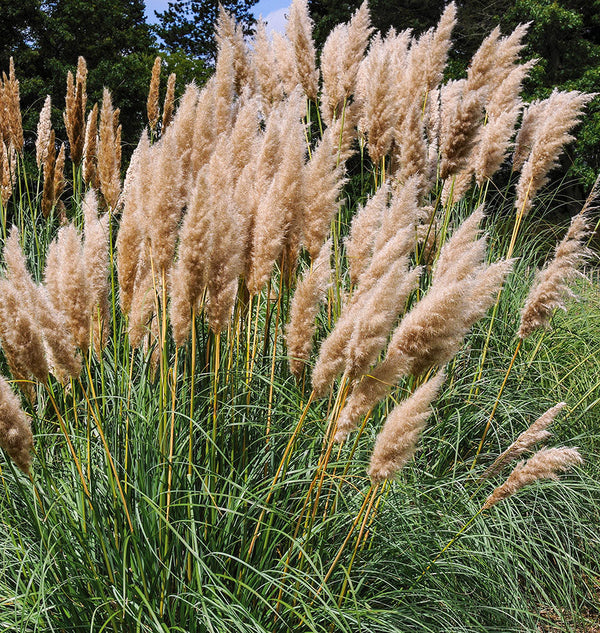Support Food Banks Canada with every dollar spent — 15% sales donated from Black Friday to Cyber Monday.
Time remaining:
Time remaining:

This massive perennial takes three years to reach full maturity, so make it part of a long term garden plan. Cortaderia is naturally heat tolerant, and its sharp leaves make it deer resistant. Continue reading below for tips on how to grow pampas grass from seed.
Continue ReadingMillet is the very picture of ornamental grass. The golden green foliage darkens at the points most exposed to the sun, becoming more mahogany in tone. About mid summer, the rush-like panicles begin to emerge, rising to a height of 90cm (36"). Continue reading below for some tips on how to grow millet from seed.
Continue ReadingNative to the Mediterranean region, Lagurus grows well in any temperate environment, and puts on a great show mid-summer in containers, garden beds, or xeriscaping landscapes. Continue reading below for details on how to grow Bunny Tails Grass.
Continue ReadingThis hardy, low-growing wildflower mix includes twelve species of annuals and perennials that can be used to replace conventional grass lawns. The blend can also be mixed in with other Lawn Solution seeds to increase forage and shelter for pollinators and other beneficial insects.
Continue ReadingEasy Care Envirolawn is a mix of slow-growing grasses & drought tolerant flowers. These low growing, low maintenance varieties can be used as lawn, in paths between beds, or for filling any area that needs fast erosion control. It’s highly recommended for covering septic berms.
Continue ReadingTall Fescue stands up to traffic, drought, cold, shade, pets, and mowing. It is far tougher than conventional lawn grasses like Kentucky blue grass, but it still makes a lush green lawn. It is commonly used by municipalities for planting recreation fields and school grounds.
Continue ReadingThis low-growing space filler will work in sun to partial shade, producing flowers that feed pollinators, followed by seeds that feed wild songbirds. This member of the mint family is also edible in salads and tea blends. Continue reading below for tips on how to grow Prunella from seed.
Continue ReadingOur annual phlox is a cultivar of Phlox drummondii, which is native to Texas, but found in numerous other states. It is a low-growing meadow wildflower that works well on its own, or planted with others in containers or raised beds. Continue reading below for some tips on how to grow phlox from seed.
Continue ReadingWith over 1,100 seed varieties to choose from, finding a clear path to the checkout can feel overwhelming. There are beginner mistakes to be made - as well as ways for seasoned gardeners to bite off more than they can chew. Here are Mark's top ten pointers to consider when planting a new garden.
Continue ReadingAlthough they arrived from Europe, they’re well at home now in BC’s Lower Mainland and many other regions. This lively beetle (Amphimallon majalis) has an annual life cycle that is worth understanding in an attempt to control it. The beetle...
Continue ReadingSpring is the time for planting wildflower seeds. These little seeds can be direct sown from late March to early May. If you’re aiming for an annual flower garden, planting early will give you a head start on flowering. Choose...
Continue ReadingOne of the amazing opportunities facing all gardeners and farmers is planting for wildlife — or, at least, growing food with biodiversity in mind. Organic gardeners understand that soil health is inherently dependent on robust biodiversity in the soil. Earthworms,...
Continue ReadingWhile recreational field turf has its uses, most urban and suburban lawn leaves the Earth with a net loss. Space that could be used for growing food or feeding pollinators is dedicated instead to demanding, non-native grasses. Lawn grass is...
Continue ReadingThere are many combinations of plants for interplanting – which combination suits your needs the most? One way of maximizing the return from garden space is to interplant crops. This is the practice of planting one kind of crop, and...
Continue ReadingHere’s a bit of geeky plant science for you. David Bradbeer at the Delta Farmland & Wildlife Trust sent me this great image of the roots of white clover. You can plainly see bumps along the roots that are called...
Continue Reading